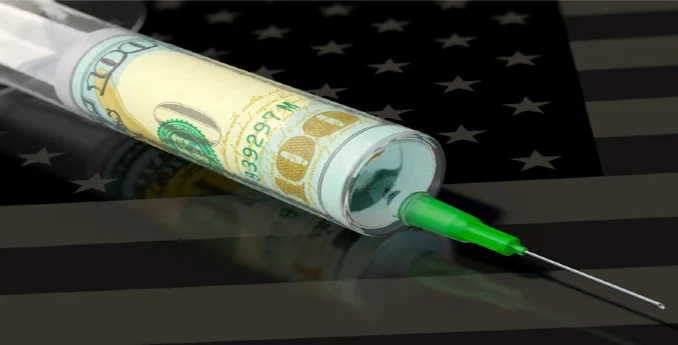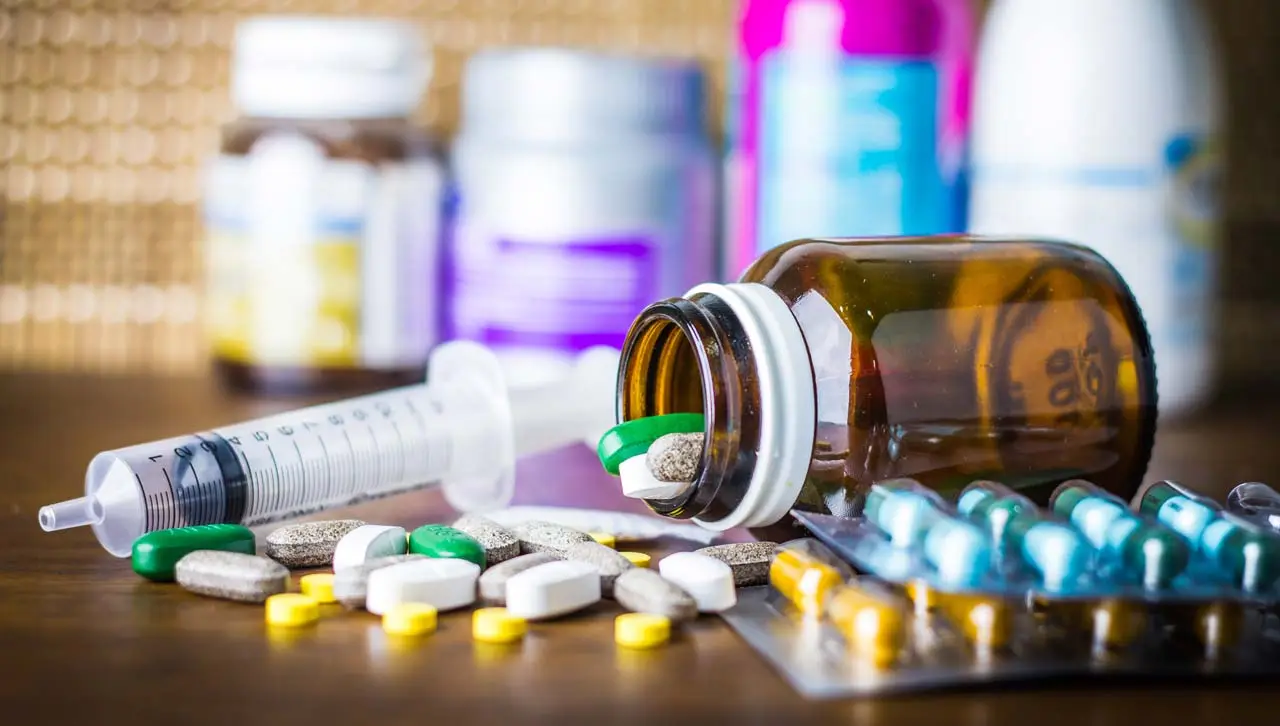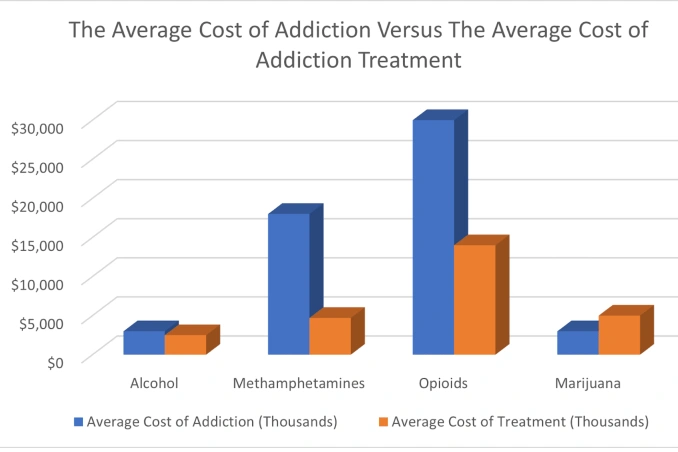How Much Do Drugs Cost?

Many times we hear individuals and informational outlets discussing the cost of drugs. However, these prices can be measured in several different currencies. There’s the cost of illegal drugs themselves, as well as the health fallout from these illicit substances, as well as the even greater impact of legal drugs like alcohol and nicotine.
In some cases, when discussing drug prices, this may not necessarily be referring to a fiscal value. Sometimes, these costs take the form of collateral damage done to friends and family members as a result of an individual’s addiction.
In the most severe cases, the price is human life. In these tragic instances, no monetary figure can accurately define the price of a life lost too soon.
Regardless of the outcome of an individual’s struggles with substance abuse, the first big impact is, in fact, financial. Particularly for those with a severe addiction, individuals may be willing to pay quite a steep price in order to maintain their habit.
The Financial Cost of Drugs
So, this begs the question, how much do drugs cost? And, in extension to this, does the cost of drugs impact drug addiction? After all, in a retail store, the cost of goods has a significant effect on sales trends every quarter. Thus, it only makes sense to assume the same for the cost of illegal drugs on addiction.
However, the specific instance in which money is exchanged for drugs changes drastically when wanting for drugs changes to a need. A consumer may see a purse they want, but they do not have to and normally would not buy it if it is too expensive. The same can be said for a casual drug user who has not crossed the line into becoming a full-blown addict.
However, a person who is dependent on a substance will likely have no problem spending a hefty sum on illicit drugs or any other vice.
The Development of an Addiction
Once an addiction has developed, the initial want changes to a need, and the user becomes compelled to obtain their drug of choice by any means necessary. Thus, drug prices have minor significance in the final decision to purchase them, unless the user has multiple options for obtaining a specific substance.
In these cases, most users of harder drugs such as cocaine, heroin, and crystal meth will neglect other financial obligations to satisfy the financial demands of their addictions.
The Cost of Regular Marijuana Use
Many people would argue that “lighter” or “safer” drugs, such as marijuana, do not cause a financial strain, and the user has more restraint. In fact, most regular marijuana users would argue that they have firm control over their habitual use of the drug.
While it is true that marijuana may not cause physical withdrawal-like symptoms, there are very real financial consequences to regular usage of this substance.
In 2019, data suggested that individuals typically end up paying about $33 for an eighth of marijuana. On average, daily users consume anywhere from an eighth, or 3.5 grams, to a quarter, or 7 grams, of weed per week.
On the low end, this is an average of about $1,584 per year. The high end, or a half-ounce per week, leads to a yearly expense of about $3,168. For the average consumer and member of the workforce, having an additional $1,500 to $3,000 per year could lead to a tremendous improvement or advancement in an individual’s life.
When stepping back to look at the amount of money one is spending to maintain their vices, it can be quite eye-opening as to just how consuming these habits may be. The costs of illegal drugs, or even legal medical marijuana, can mount rapidly and become a major part of daily expenses for regular users.

The Price of Opioids and Cost of Heroin
Of course, when discussing the cost of opioid addiction, the most damaging loss falls into the category of overdose deaths. In this alone, the cost of illegal drugs is far too steep in our society.
A staggering 49,860 lives were lost as a result of opioid overdose in 2019 alone; the only substance that comes close to this is methamphetamine, which resulted in close to 16,167 deaths during the same year.
Currently, the average cost of one gram of heroin is roughly $152. An average heroin user consumes about $438 in heroin per week or roughly one half-gram per day. Heavy users can easily blow through $1,750 per week, almost two grams per day, to satisfy the cost of drugs and avoid withdrawal. This equals a mind-blowing total of anywhere between $21,024 and $84,000 per year.
A Brief History of Opioid Addiction
Having originally been prescribed to patients as a means of pain relief, opioids used to be common prescription drugs. However, this changed after they made their addictive potential known starting in the late 1990s.
While the pharmaceutical industry previously claimed that these drugs would not be an addiction risk, a staggering number of cases in which patients became dependent on their prescribed medicine quickly followed their dispersal.
The use of opioids hit a peak in the United States around 2017 when the U.S. Department of Health and Human Services officially declared the outbreak of prescription drug addiction an epidemic.
Furthermore, prior to this, aggressive sales campaigns by manufacturers of dangerous opioid prescription drugs like Oxycontin and Roxycodone led to a spike in the use of these prescription painkillers. These brand-name drugs were heavily promoted as being safer alternatives to other opioids, information that was highly inaccurate. Furthermore, these prescription drugs were found to be relatively ineffective compared to their advertised benefit as treatments for cancer-related pain.
Civil action against these pharmaceutical companies and prescription drug manufacturers, combined with legal cases against “pill mills” (doctor’s offices open strictly for the distribution of pain pills), led to a drastic downturn in the availability of these medicines.
While initially meant to reduce the number of opioid prescriptions being given to patients as an attempt to lower addiction rates, this did not necessarily work. Unfortunately, their unavailability created new opportunities to produce synthetic versions of these prescription drugs within the illicit drug market.
Instead of being used as a form of medicine, this restriction led to the development of synthetic opioids such as heroin. Now widely available as street drugs, combined with these previously prescription drugs’ costs being relatively low, opioid addiction cases are experiencing a vicious resurgence.
The High Cost of Cocaine Addiction
It is not uncommon for high-profile members of society like lawyers or medical community members to engage in cocaine use. A heavy user of cocaine can manage to consume 5 grams per day in some cases. Based on average prices, this can lead to a grand total of $169,725 per year, making it one of the most expensive illegal narcotics on the black market.
Crack cocaine, which is often considered a drug of the lower class, carries a lower yearly total but is still alarming. At an average price per gram of $60, a heavy user of crack cocaine can still blow up to $100,000, chasing their high of choice, making the cost of illegal drugs in the case of cocaine very expensive indeed.
Costs of the Various Forms of Cocaine
Cocaine can be consumed in two different forms; “soft” or raw cocaine, or “hard” or crack cocaine. The former is often considered a rich man, or high-class drug, due to its typically high price tag.
Cocaine has dominated every decade from the 1970s into the early 2000s. However, crystal meth has surpassed cocaine over the last five years because of its potency and extremely low drug prices.

The Costs of Illegal Drugs: Meth Addiction
In the 90s and early 2000s, aggressive campaigns were launched by the DEA and federal law enforcement agencies across the United States. These campaigns targeted clandestine methamphetamine labs, which had become a dangerous issue throughout rural areas of many states. Private labs everywhere that supplied most of the nation’s methamphetamine were commonly leading to massive explosions that resulted in many deaths and even more injuries.
Additionally, homes that were previously used to manufacture methamphetamine posed serious health risks to future tenants because of lingering chemicals. During this period, the average price of a gram of methamphetamine ranged from $120 to $200, making it a considerably more expensive drug, although contrary to the cost of illegal drugs in general, both the purity and average pricing of meth have actually decreased over the past several years.
Cheap Meth and Expensive Consequences
While law enforcement campaigns curbed a great deal of these manufacturing operations, and the use of the drug overall declined, this achievement was relatively short-lived.
Sometime around 2011, Mexican drug cartels ramped production back up on a highly potent form of methamphetamine known as “ice.” Many areas report a purity of nearly 100% in drugs seized, and the cost to manufacture this concentrated speed is next to nothing for the cartels that import it.
The average price for a gram of methamphetamine is currently between $20 and $60 per gram. If these figures are accurate, a heavy user of the drug can stay high every day for around $38,000 per year. Daily users of smaller amounts can fund their habit for about $12,000 per year, making meth one of the cheapest and purest highly addictive drugs on the market.
Many methamphetamine users also abuse alcohol. It is easy to lose sight of alcohol in discussions regarding the cost of drugs. However, this familiar demon should never be underestimated.
The Costs of Alcoholism
When it comes to alcohol, the price to maintain this addiction is incredibly low compared to other vices. A fair benchmark for the average alcoholic’s consumption is about a 12-pack of beer per week. Based on these estimates, this continuous use throughout the year costs about $3,000 to maintain.
This, however, does not include the potential costs of driving-related offenses such as DUI and the ramifications of a license suspension, nor the costs of damage to your liver or overall health.
The Deadly Costs of Drunk Driving
Often, the price paid due to drunk driving is not just measured monetarily. According to the CDC, 10,497 people were killed in alcohol-related traffic accidents in 2016 alone. This figure accounted for 28% of all traffic-related deaths in the United States that year.
Other Health Costs of Legal Drugs
There are other drugs that fall into the legal category of alcohol. However, these substances can be just as deadly as any street narcotic. When you consider the overall cost of drugs, legal prescriptions must be considered as well.
Substances that fall into this category are medications typically used to treat mental health conditions, such as Xanax, Valium, and other benzodiazepines. While alcohol and prescription medication such as Xanax are both legal, they also are two of the few addictive substances that can be fatal during their withdrawal period.
A Steep Price to Pay for Benzos
The long-term effects of habitual benzodiazepine usage are still not completely understood, considering the short length of time these drugs have been on the market. However, what is known is that, between 2019 and 2020, benzos made up 17% of all drug overdose deaths.
Despite these numbers, these prescription drug costs do not typically take into consideration that of lives lost. Besides the domino effects and individual risk for damage when it comes to the cost of drugs, one must also consider the direct harm caused to society by substance abuse.

Direct Harm Caused by Drugs to Society
To put things in perspective, a report published in 2002 estimated that the economic cost of drugs in the United States was $180.9 billion. It is only fair to assume that this number has increased exponentially since these reports surfaced.
The Physical Price of Addiction
The most common ways in which members of society pay for substance abuse, whether their own or another’s, falls under the health category. In particular, the prevalent potential to spread illness that comes with the abuse of most street drugs (i.e. heroin, cocaine, etc.).
It is estimated that a large number of adults living with AIDS contracted the deadly virus from the illicit use of needles to inject narcotics. Hepatitis is another contributor to the far-reaching grip that drug use has on the overall health of our society.
Hepatitis C is so prevalent in the IV-drug community that an estimated 70% to 90% of users that have injected drugs for ten years or more have the disease. Numbers that reach the heights of AIDS and Hepatitis throughout the drug community penetrate other social circles that otherwise have nothing to do with substance abuse. This is one of the clearest examples of the cost of drugs for non-users.
Furthermore, even when excluding deaths resulting from drunk driving incidents, research has found that the United States loses more years of life to alcohol and drug-related causes than most other countries.
Impacts of Addiction on Reproductive Factors
Sadly, individuals who contract blood-borne illnesses from drug users are not the only innocent ones at risk. Every day, children are born with serious medical conditions directly brought on by the substance abuse of pregnant mothers.
Pregnant women, unborn, and newborn children are at high-risk for serious medical consequences when illegal narcotics enter the picture. Around 5% of pregnant women report illicit drug abuse during pregnancy. The following are some of the most common effects of substance abuse on unborn or newborn children.
- Birth defects
- Low birth weight or premature birth
- Sudden Infant Death Syndrome (SIDS)
- Seizures
- Excessive crying
- Diarrhea
- Physical and mental developmental issues later
Infants born addicted to opioids often must be weaned from the drug shortly after birth. The withdrawal symptoms experienced by a newborn are no different than those of an adult. Many children born into these situations end up in the Child Protective Services system for most of their lives. The high number of these cases puts a strain on state and federal funding.
Currently, many states are well over budget in this particular department; this is a clear example of the cost of drugs for our state and federal programs.
Community Impacts of Substance Abuse
Furthermore, the drug abuse epidemic has taken a toll on many inner-city areas around the country. These detrimental effects have particularly put the future of many young people in a stranglehold, with some areas barely clinging to hope.
All of the following community dynamics have been touched by the high cost of drugs:
- Educational standards and resources, due to a lack of funding for many poverty-stricken areas; family training and education are especially lacking.
- Violent crime and poverty rates are sky-rocketing as a direct reflection of drug costs for our social system.
- Housing problems, with many families residing in structures that could easily be considered uninhabitable.
- Homelessness spikes, as many users turn to the streets when their living expenses are neglected to maintain their addictions.
With these things being said, one crucial question remains for users and community members fighting this epidemic. Are resources like rehab and drug treatment effective at combating these issues?
Data proves that rehabilitation services and other treatment options do have high success rates. Of course, many individuals express concerns over the cost of these programs. In these cases, one must truly weigh the cost of treatment versus the cost of their addiction.

The average cost of substances vs average treatment cost (does not include health damages, legal costs, etc.)
The Cost of Treatment vs. The Cost of Addiction
Many addicts look at treatment as a punishment instead of a way out of the throes of addiction. However, this is often a way for users to justify their continued use by throwing shade on a potential solution.
The easiest way to highlight the benefits of any particular treatment is by comparing the average costs of treatment and the high cost of years of drug abuse. Treatment may indeed bring short-lived physical and mental anguish in the early stages, but this has to be viewed as a period of growth.
This temporary discomfort in the process of obtaining long-term benefits, and the monetary aspect of treatment, pale in comparison to the loss of friends, the deterioration of the home and family structure, and the loss of one’s self that are often the result of continued substance abuse.
However, no matter how hard an individual tries, the decision to get clean is a personal one. True change only comes from within, and many believe that a user will usually see the true cost of drugs once rock bottom is experienced.
Seeking Treatment for the High Cost of Drugs
By looking at the matter subjectively, a user may understand the real picture of substance abuse’s damage to their lives and the world around them.
Oftentimes, addiction treatment can be the best option and the first step to assessing and repairing the damage sustained from the high cost of drugs. When an addict truly understands the cost of drugs, they can begin to repair the damage sustained from their addiction.
If you or a loved one is struggling with substance abuse and are ready to seek out addiction treatment, know that this is the right choice; and our team at Find Addiction Rehabs is here to help you make it. Just by calling our 24/7 hotline today, you can receive confidential help finding alcohol or drug rehab centers that are dedicated to serving your personal care needs.
Stop spending your time and money fueling your vices; make the call, and let us help you get started on a path where you can invest in a better future for your community, your loved ones, and most importantly, yourself!

